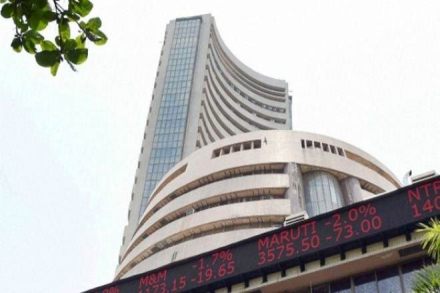The benchmark Nifty50 returned nearly 10% in a volatile Samvat 2075 better than the 4.5% rise in the previous Samvat. However, for the second Samvat year in a row, both the Nifty MidCap and the Nifty SmallCap Index both lost value.
Indeed, the performance of the benchmarks was eclipsed by the poor showing by the broader market. While the Nifty MidCap ended the year with a 7% fall, Nifty SmallCap Index suffered a bruising 10.3% loss on the back of back-breaking 22.4% decline in the year before.
In fact, the Sensex may have surged past 40,000-mark for the first time and the Nifty may have scaled 12,000 but these movements camouflage the true returns from the market because the rise was due to just a handful of stocks. The poor earnings growth reported by most companies was reflected in that most stocks lost value. Nearly half of the Nifty50 and about 60% of the Nifty MidCap and SmallCap companies ended the year in the red.
The sharp deceleration in the economy — GDP growth fell to 5% in Q1FY20, the lowest growth in 25 quarters — disappointed investors. Most economists as also the Reserve Bank of India (RBI) have lowered their growth estimates for FY20. The consensus now is closer to 6%.
The Sensex shed over 10% from its June peak after the foreign portfolio investors (FPIs) started paring their exposure following the government’s proposals for enhanced surcharge on short-term and long-term capital gains tax in its July budget. Since then, the equity market has remained range-bound even though the proposal was subsequently withdrawn.
Siddhartha Khemka, head of Retail Research, Motilal Oswal Financial Services, believes monetary easing along with fiscal stimulus will be key in Samvat 2076. The reduction in the corporate tax rate has brought some cheer to earnings, but for FY20, it will largely limit the earnings downgrades rather than drive big upgrades.
“The silver lining to against this sombre backdrop is that the festive season demand has begun on a positive note. Thus, while we are expecting 12% EPS growth in FY20 for Nifty, we are estimating strong revival of 28% growth in FY21,” said Khemka.
The year which was also marred with many headwinds in the form of economic slowdown and stress in the financial sector prompted the government to announce a sharp reduction in corporation tax rate and a fillip for investments in manufacturing.
During the year, FPIs shopped for Indian equities worth nearly $10 billion to mark their highest purchase in the last five years. On the flip side, local investors including mutual funds bought shares worth $7.4 billion during the period.
Gaurav Dua, senior V-P, Sharekhan by BNP Paribas, said: “We are constructive on the equity markets over the next one year. The policy initiatives taken will yield results in terms of an improvement in consumer demand and a revival in corporate earnings growth. The broader markets could do better than benchmark indices over the next year as compared to sharp underperformance in the past two years.”
The BSE Consumer Durables Index surged the most with a 41.3 % gain during the year as investors expect boost in consumption post government stimulus and best monsoon in 2019.
The laggards were the BSE Metal and BSE Auto indices which lost 30.7% and 13.4%, respectively, as slower economic momentum and the trade war between China and the US made the sector less attractive for the investors.
